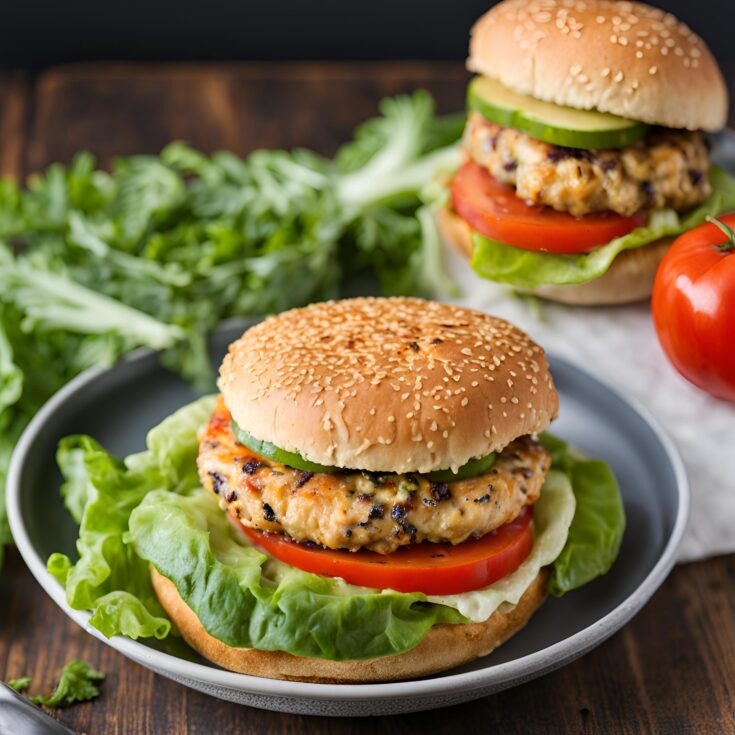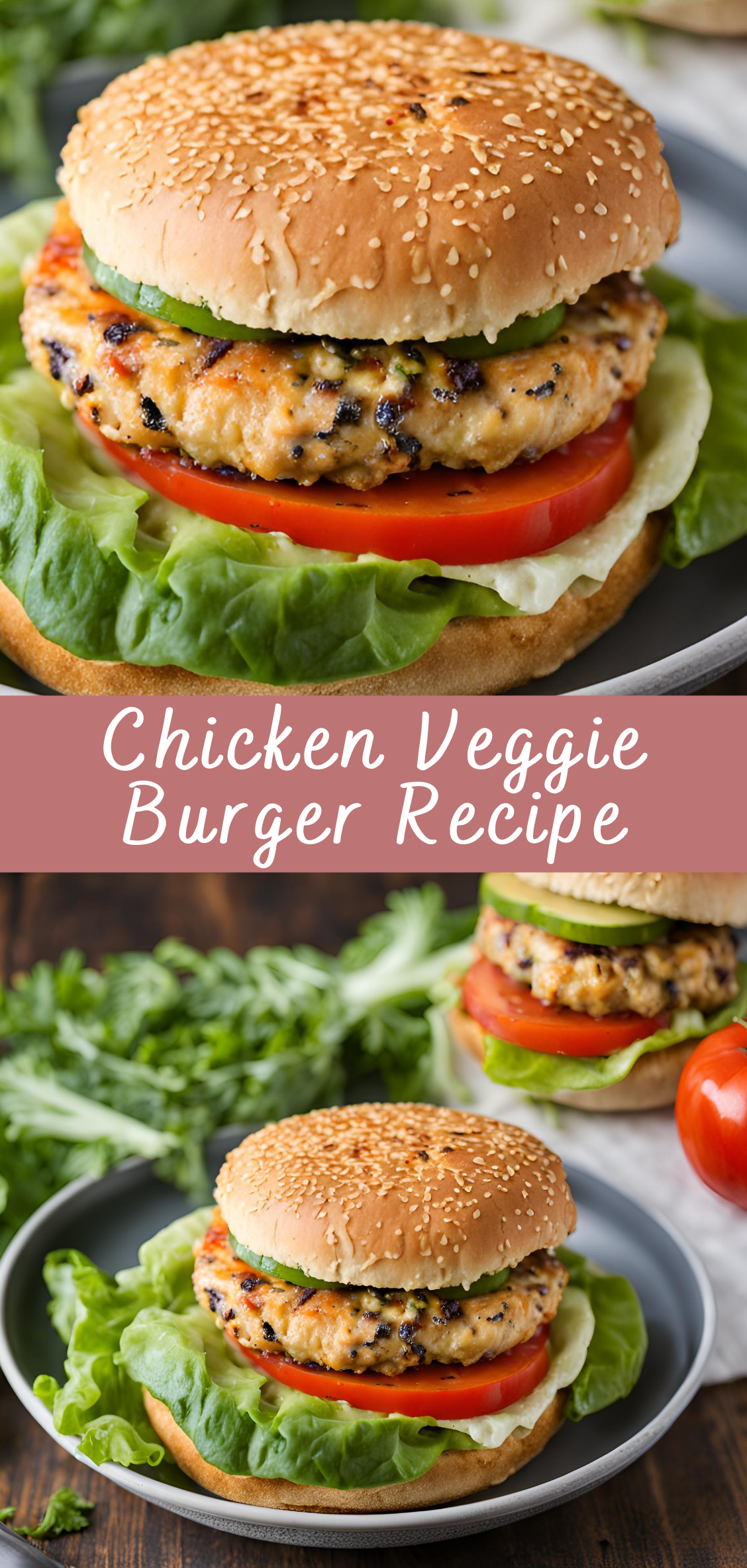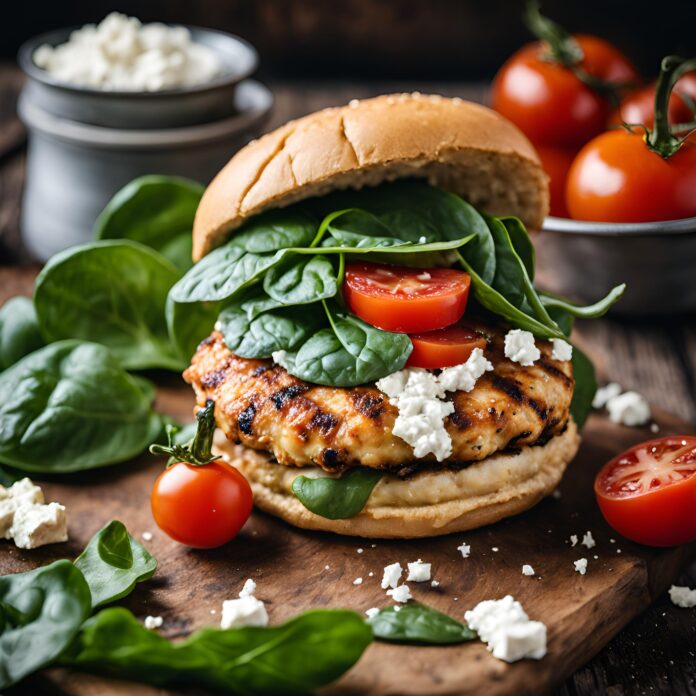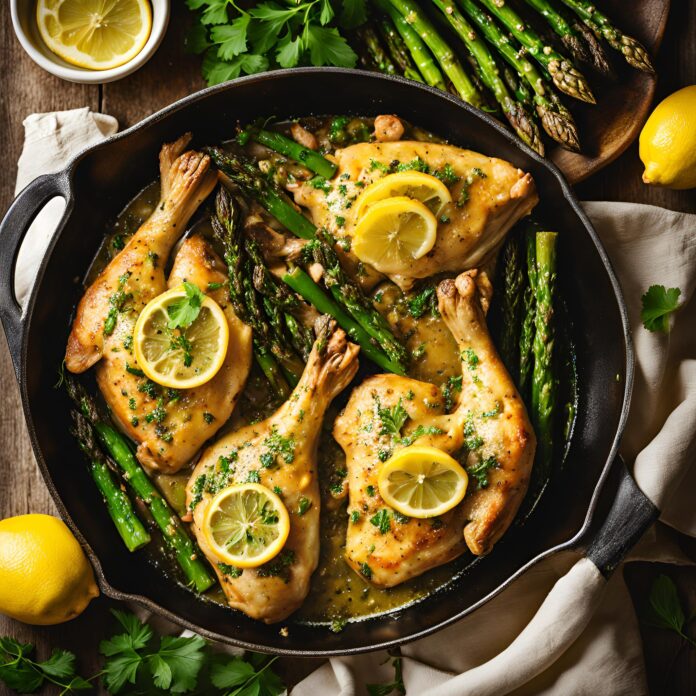Chicken Veggie Burger Recipe
This Chicken Veggie Burger recipe is not only healthy and flavorful but also extremely versatile. You can modify the recipe to suit your dietary preferences and the ingredients you have on hand. Whether you’re looking to reduce your meat consumption, or you just want a lighter alternative to traditional beef burgers, these chicken veggie burgers are an excellent choice. They pack a punch of flavor, are easy to make, and can be customized to match your taste perfectly.

By using fresh, wholesome ingredients and experimenting with different herbs, spices, and toppings, you can make this burger your own. Whether you’re grilling it for a summer cookout or making a quick dinner during the week, the chicken veggie burger is sure to impress and satisfy.
Instructions
Step 1: Prepare the Chicken Veggie Mixture
- Grate and prepare the vegetables: Using a box grater or a food processor, grate the zucchini, carrot, and onion. For the zucchini, it’s a good idea to place it in a clean towel or paper towel to squeeze out excess moisture, as zucchini can release a lot of liquid when grated. This helps prevent your patties from becoming too soggy.
- Sauté vegetables (optional): In a large skillet, heat 1 tablespoon of olive oil over medium heat. Add the onion and garlic and sauté for about 2-3 minutes until softened. Then add the grated carrot and zucchini and cook for another 3-4 minutes, just until the vegetables start to soften. Season with a pinch of salt and pepper. Let them cool slightly before proceeding.
- Mix the chicken: In a large mixing bowl, combine the ground chicken, sautéed vegetables, breadcrumbs, egg, soy sauce, spices (paprika, cumin, oregano), and fresh herbs (optional). Use your hands or a spoon to mix the ingredients thoroughly until everything is well incorporated. The mixture should feel firm but moist. If it’s too wet, add a little more breadcrumbs; if it’s too dry, add a bit of olive oil or a splash of water.
- Form the patties: Divide the chicken mixture into four equal portions. Roll each portion into a ball and gently flatten it into a patty shape, about 3/4 inch thick. Make sure the edges are smooth so they hold together while cooking. If you want to make smaller or larger patties, feel free to adjust the portion sizes accordingly.
Step 2: Cook the Chicken Veggie Patties
- Option 1: Pan-frying
- Heat a non-stick skillet or cast-iron pan over medium heat. Add a teaspoon of olive oil and swirl it to coat the pan.
- Place the patties into the pan, making sure not to overcrowd. Cook for 4-5 minutes on each side until golden brown and fully cooked through (internal temperature should reach 165°F/74°C). If the patties are browning too quickly on the outside, lower the heat slightly and cook them longer to ensure they cook evenly.
- Option 2: Grilling
- Preheat your grill to medium-high heat. Lightly oil the grill grates with a paper towel dipped in oil or use non-stick spray.
- Grill the patties for about 4-5 minutes per side until they are golden and have an internal temperature of 165°F/74°C. Be careful when flipping, as the veggie mixture might be more delicate than traditional beef patties.
- Option 3: Baking
- Preheat the oven to 375°F (190°C). Place the patties on a baking sheet lined with parchment paper or a silicone mat.
- Bake the patties for 15-20 minutes, flipping them halfway through the cooking time to ensure they cook evenly on both sides.
Step 3: Assemble the Burger
- Toast the buns: While the patties are cooking, you can lightly toast your burger buns. Place the buns, cut side down, on a dry skillet or grill pan over medium heat. Toast for about 1-2 minutes until golden brown and crispy.
- Assemble the burger: Spread your favorite condiments (mustard, ketchup, or mayo) on the bottom bun. Place the lettuce leaves on top, followed by the chicken veggie patty. Layer the sliced tomatoes, avocado slices, and pickles or pickled onions on top. If you’re adding cheese, place a slice on top of the patty in the last minute of cooking, or place it on the patty right before assembling to let it melt.
- Top with the bun: Place the top bun over the assembled ingredients, and your Chicken Veggie Burger is ready to serve!
Serving Suggestions
- Side dishes: Serve your Chicken Veggie Burger with a side of sweet potato fries, regular fries, or a refreshing green salad.
- Sauces and condiments: You can experiment with different toppings such as chipotle mayo, tzatziki, barbecue sauce, or even a simple yogurt dressing.
- Meal prep: These chicken veggie patties are perfect for meal prepping. Make a batch and store them in the refrigerator for up to 3 days or freeze them for up to 2 months.
Tips for Success
- Use lean ground chicken: Chicken breast is typically leaner and will produce a more tender burger, but you can use a combination of chicken breast and thighs for extra juiciness.
- Don’t overwork the mixture: Be gentle when mixing the chicken and veggies. Overworking it can make the patty tough.
- Adjust moisture: If the patty mixture seems too dry, add a bit of olive oil or a small splash of water. If it’s too wet, increase the amount of breadcrumbs to help bind the mixture.
- Cooking methods: If you’re looking for a healthier version, grilling or baking the patties will save on oil. Pan-frying gives the patties a nice crispy exterior but uses more oil.
Variations
- Spicy Chicken Veggie Burger: Add a minced jalapeño or a teaspoon of chili flakes to the chicken mixture for some heat.
- Vegan Option: Substitute the ground chicken with a plant-based meat substitute (like Beyond Meat or Impossible Burger) or use a combination of mashed chickpeas, lentils, and oats for a vegan veggie patty.
- Cheese options: Use a dairy-free cheese slice for a vegan burger or choose sharp cheddar for a stronger cheese flavor.
- Toppings: Experiment with different toppings like caramelized onions, sautéed mushrooms, or a fried egg for a more indulgent burger.
Meal Prep and Storage Tips
Meal prepping is an excellent way to save time and ensure you have healthy meals ready throughout the week. Here are some practical tips for preparing Chicken Veggie Burgers in advance and storing them properly:
How to Make Chicken Veggie Burgers Ahead of Time
- Prepare the Patties: You can make the patties up to 2 days ahead of time. Once the patties are shaped, place them on a baking sheet lined with parchment paper or a silicone baking mat. Cover with plastic wrap or foil, and refrigerate until ready to cook.
- Freeze the Patties: If you’d like to prepare a batch for future meals, freeze the patties individually. Lay them out on a baking sheet in a single layer and freeze until solid (about 1-2 hours). Once frozen, transfer them to an airtight container or freezer-safe bag. You can store them for up to 2 months. To cook, thaw in the refrigerator overnight and follow the same cooking instructions.
- Cook and Store: If you prefer to cook the patties in advance, allow them to cool completely before storing. They can be kept in an airtight container in the refrigerator for 3-4 days. Reheat them in a pan, microwave, or oven before assembling your burger.
Storage of Leftovers
If you have leftover Chicken Veggie Burgers, you can store the cooked patties separately from the buns and toppings to prevent sogginess. Keep the cooked patties in an airtight container in the fridge for up to 3 days. The buns can be stored in a separate container, and you can assemble your burgers quickly when needed.
For long-term storage, you can freeze leftover cooked patties in a freezer-safe container for up to 1 month. When ready to enjoy, reheat the patties in the oven or microwave.
Nutritional Benefits of Chicken Veggie Burgers
The Chicken Veggie Burger is a nutrient-packed alternative to a traditional beef burger, providing you with lean protein, fiber, and essential vitamins and minerals from the vegetables. Here’s a breakdown of some of the key nutrients you’ll get from this dish:
- Protein: Chicken is an excellent source of lean protein, essential for muscle repair and maintenance. A single patty can provide you with a significant portion of your daily protein needs.
- Fiber: The inclusion of zucchini, carrots, and spinach/kale provides a good amount of dietary fiber, which aids digestion and helps to keep you feeling full longer.
- Vitamins and Minerals: The vegetables used in the recipe—especially the spinach, carrots, and zucchini—are rich in important vitamins like vitamin A, vitamin K, and several B vitamins. Additionally, they provide minerals such as potassium and magnesium, which are vital for heart health and muscle function.
- Healthy Fats: If you add avocado, you’ll benefit from healthy monounsaturated fats that are great for your heart. Olive oil also provides a dose of heart-healthy fats.
- Low in Calories: By using lean chicken and vegetables, this recipe is relatively low in calories compared to traditional beef burgers. It’s an excellent choice if you’re aiming to maintain or lose weight while still enjoying a satisfying meal.
Customizing Your Chicken Veggie Burger
One of the great things about chicken veggie burgers is their versatility. You can customize them to match your taste preferences, dietary needs, or what you have available in your pantry. Here are some ideas for customization:
1. Vegetable Variations
If you’re looking to change up the veggie mix, here are some options:
- Sweet Potato: Grated sweet potato can add a natural sweetness and extra moisture to the patties. It pairs beautifully with the savory chicken.
- Corn: Fresh or frozen corn kernels can add a delightful crunch and sweetness to the patties.
- Bell Peppers: Finely chopped red, yellow, or orange bell peppers can add color and a slight sweetness to the burger mixture.
- Mushrooms: Finely diced mushrooms are an excellent way to add umami flavor and moisture. Sauté them first to reduce excess moisture and prevent sogginess.
2. Protein Substitutes
- Ground Turkey: Ground turkey is another lean meat that works well in veggie burgers. It’s similar to chicken but with a slightly different flavor profile.
- Vegan Option: If you prefer a plant-based alternative, you can substitute the chicken with mashed chickpeas, lentils, or a store-bought vegan meat substitute (like Impossible or Beyond Meat). For a vegetarian option, you can use black beans combined with breadcrumbs or oats for binding.
3. Binding Alternatives
While breadcrumbs are typically used to help bind the patty, there are several alternatives if you’re following a gluten-free diet or prefer different textures:
- Oats: Rolled oats or oat flour can be used as a binding agent. Oats will absorb moisture and help keep the patties together.
- Ground Flaxseed: A mixture of ground flaxseed and water (known as a flax egg) can be used as a binder for a gluten-free or vegan version.
- Rice: If you prefer a heartier patty, you can incorporate cooked rice (white or brown) into the mixture for added texture.
4. Cheese Options
The inclusion of cheese can elevate the flavor of your Chicken Veggie Burger. Here are some cheese options you can try:
- Cheddar: A sharp cheddar will give your burger a tangy kick.
- Mozzarella: Soft and gooey mozzarella adds a creamy texture to the burger.
- Goat Cheese: For a slightly tangy and creamy flavor, goat cheese can be an excellent option.
- Vegan Cheese: If you’re vegan or dairy-free, there are many plant-based cheese alternatives available in stores.
Cooking Techniques and Perfecting the Chicken Veggie Burger
The technique used to cook the Chicken Veggie Burger can impact the final result. Here are some tips for getting the perfect patty every time:
1. Ensure Even Cooking
If you’re cooking on the stovetop, make sure the pan is at the right temperature. A medium heat is ideal to ensure the patties cook through without burning on the outside. If you’re grilling, ensure the grill is preheated, and avoid pressing down on the patties with your spatula. Pressing can cause them to lose moisture, resulting in dry burgers.
2. Flip Carefully
Chicken veggie patties are more delicate than beef patties, so flipping them with care is essential to prevent them from breaking apart. If you’re worried about breaking, use a large spatula or even two smaller ones to gently flip the patty. This is especially important if you’re pan-frying or grilling.
3. Cook to the Right Temperature
Chicken needs to be cooked to an internal temperature of at least 165°F (74°C) to be safe for consumption. To check the temperature, use an instant-read meat thermometer. This ensures the chicken is fully cooked without overcooking it, which could make it dry.
Creative Ways to Serve Chicken Veggie Burgers
While classic burger buns are a popular choice, there are other creative and fun ways to serve Chicken Veggie Burgers, particularly if you’re looking to lower the carb content or offer something different:
1. Lettuce Wraps
For a low-carb option, replace the burger bun with large lettuce leaves. Romaine, iceberg, or butter lettuce all work well for this purpose. The lettuce will provide a satisfying crunch while keeping the burger fresh and light.
2. Open-Faced Burger
Instead of a bun, serve the Chicken Veggie Burger on top of a slice of whole-grain bread or a toasted English muffin. This allows you to reduce the carb content while still enjoying a flavorful meal.
3. Over a Salad
For a complete meal, serve your Chicken Veggie Burger on top of a hearty green salad. You can use mixed greens, arugula, spinach, or kale and top the salad with sliced tomatoes, cucumbers, and a tangy dressing. This adds extra nutrients and keeps things fresh.
4. With a Side of Veggies
For a more balanced meal, serve the Chicken Veggie Burger with a side of roasted vegetables, such as sweet potatoes, Brussels sprouts, or roasted cauliflower. These vegetables pair perfectly with the flavors of the burger and provide additional fiber and vitamins.
Conclusion: The Ultimate Healthy Chicken Veggie Burger
The Chicken Veggie Burger is a versatile, flavorful, and healthy alternative to a traditional beef burger. By incorporating a variety of vegetables, lean chicken, and healthy seasonings, this burger delivers a satisfying and nutrient-rich meal. Whether you’re cooking it for a weeknight dinner, meal prepping for the week ahead, or serving it at a barbecue, these burgers are sure to be a hit.
The flexibility of the recipe allows you to experiment with different vegetables, spices, and proteins to make the burger your own. Additionally, by incorporating various cooking techniques and creative ways to serve it, the Chicken Veggie Burger can be adapted to suit any occasion.
So, gather your ingredients, fire up the grill or stovetop, and enjoy a delicious homemade Chicken Veggie Burger that’s packed with flavor, nutrients, and all-around goodness!
Chicken Veggie Burger Recipe

This Chicken Veggie Burger recipe is not only healthy and flavorful but also extremely versatile. You can modify the recipe to suit your dietary preferences and the ingredients you have on hand. Whether you're looking to reduce your meat consumption, or you just want a lighter alternative to traditional beef burgers, these chicken veggie burgers are an excellent choice. They pack a punch of flavor, are easy to make, and can be customized to match your taste perfectly.
Ingredients
- 1 lb (450g) ground chicken breast or thighs
- 1/2 cup finely grated zucchini (squeeze out excess water)
- 1/2 cup finely grated carrot
- 1/4 cup finely chopped red bell pepper
- 1/4 cup finely chopped onion
- 1/4 cup breadcrumbs (or use gluten-free breadcrumbs)
- 1 egg
- 1 tbsp olive oil
- 1 tsp garlic powder
- 1 tsp onion powder
- 1/2 tsp paprika
- Salt and pepper, to taste
- 4 whole wheat or regular burger buns
- Lettuce, tomato, and other desired toppings (optional)
Instructions
- Prepare the Veggies: Grate the zucchini and carrot, then squeeze out excess moisture using a clean kitchen towel or paper towels. Finely chop the bell pepper and onion.
- Make the Burger Mix: In a large mixing bowl, combine the ground chicken, grated zucchini, grated carrot, chopped bell pepper, chopped onion, breadcrumbs, egg, olive oil, garlic powder, onion powder, paprika, salt, and pepper. Mix everything together until fully combined.
- Form Patties: Divide the mixture into 4 equal portions and shape them into patties, about 1/2 inch thick.
- Cook the Burgers: Heat a non-stick skillet or grill pan over medium heat. Lightly coat with cooking spray or oil. Cook the patties for 5-6 minutes on each side, or until fully cooked through (internal temperature should reach 165°F/74°C).
- Assemble the Burgers: Toast the burger buns, if desired. Place the cooked chicken veggie patty on the bottom bun, add lettuce, tomato, and any other desired toppings. Top with the other half of the bun.
- Serve: Serve hot with a side of baked fries, salad, or your favorite sides.



